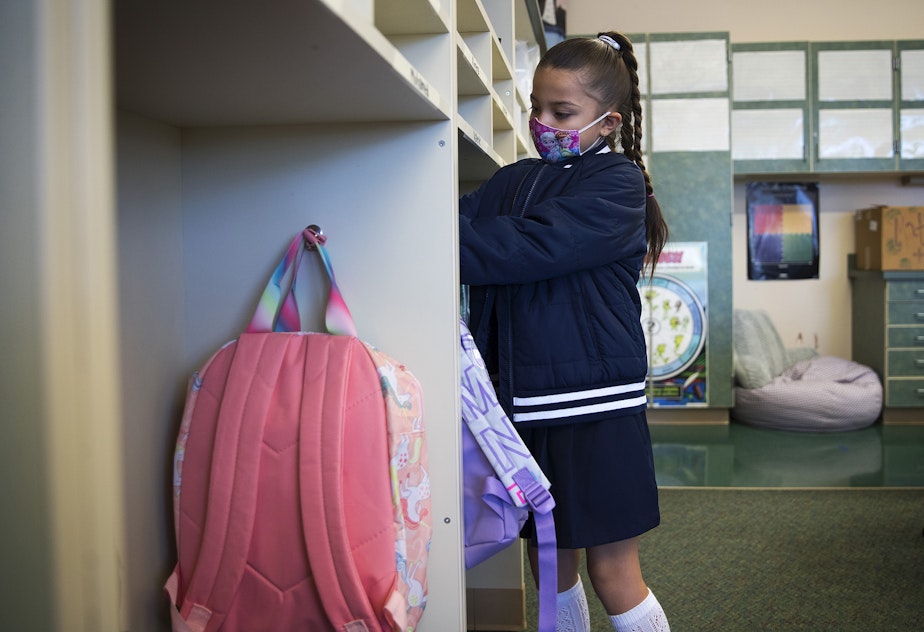How bad was the pandemic on WA students? It depends on where you live, study says

New research reveals the depth of Covid learning loss down to individual school districts across Washington state.
Between 2019 and 2022, the average Washington student lost over five months of learning in math and about three months in reading. That’s according to a new study, called the “Education Recovery Scorecard,” by researchers at Harvard University’s Center for Education Policy Research and Stanford University’s Educational Opportunity Project.
But the declines vary widely from district to district — even neighboring ones — largely depending on poverty.
“The pandemic was like a band of tornadoes that swept across the country,” Thomas Kane, director of the Center for Education Policy Research, said in a statement. “Some communities were left relatively untouched, while neighboring schools were devastated.”
For example, in the Mercer Island School District, students showed only slight learning losses in math and a bit of a gain in reading. Only about 3% of students there qualify for free and reduced lunch, a measure of poverty.
Meanwhile, in the nearby Highline School District, 65% of its more than 17,000 students are identified as low-income. The study shows Highline students lost about seven months of progress in both math and reading.
Sponsored
“Many of our students experienced significant trauma during the pandemic,” said Catherine Carbone Rogers, chief of communications for Highline. “Many of them lost family members. Our students really felt the weight of that.”
“All of that impacts learning,” she added.
Other large Washington districts that serve a greater portion of low-income students saw similar declines, especially in math.
- Students in Vancouver’s Evergreen School District lost almost seven months of learning in math, the study found. State data shows about 55% of Evergreen students come from low-income families.
- In the Kent School District, where 58% of students are considered low-income, students lost over six months of learning.
- Seattle Public Schools, the state’s largest school district where about 34% of the district’s more than 50,000 students are considered low income, lost about 4.5 months of progress.
Given the dramatic academic declines across the nation, the study’s researchers called on schools and their communities to take bold, aggressive action.
Sponsored
In Highline, Carbone Rogers said the district has prioritized bolstering student mental health services. After being isolated from their peers and teachers for so long, she said kids’ social development and maturity is lagging and teachers are dealing with elevated student behavioral challenges in the classroom.
That’s why supporting students’ social and emotional well-being has been a critical piece of recovery efforts, Carbone Rogers said.
Each school now has at least one full-time counselor, she said, and each comprehensive high school has four. The district also hired more social workers and school nurses. The district has also partnered with community organizations to provide more after-school programs.
None of that would’ve been possible without federal Covid relief funding, Carbone Rogers said.
And now, she worries about what will happen when those dollars expire next year and students still have ground to make up.
Sponsored
“We will not be able to sustain all of the supports that we have in place for kids. It won’t be possible with state funding alone,” Carbone Rogers said. “So we are facing some very difficult decisions in the coming years.”




